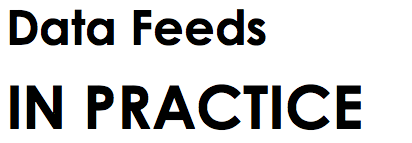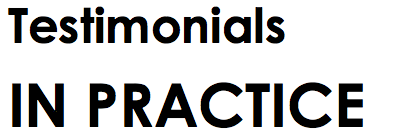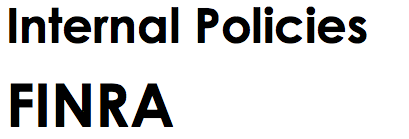
Getting Social: The Rules
This compilation of 11 factors to consider was prepared by Rajib Chanda, a partner at Ropes & Gray, for the Investment Company Institute Mutual Funds Conference.
He compares the guidance of the Securities and Exchange Commission for registered investment advisers and the Financial Industry Regulatory Authority for brokers. Then comments on what it means in practice.

Getting Social: The Rules
The content of the communication is determinative, not the type of device or technology used to send the communication, nor does it depend on whether the communication was sent using a firm-issued or personal device.
FINRA does not endorse any particular technology or software necessary to retain such records.

Getting Social: The Rules
A firm that intends to communicate using social media must determine that it can retain all required records related to social media and make them available for inspection.
The SEC permits third parties to be retained to manage these recordkeeping responsibilities.

Getting Social: The Rules
The use of social media on personal devices presents a real challenge from a record-keeping perspective.
Firms should consider using third-party software or developing internal software to maintain records, given the volume of records that can be created.
Firms should set a clear policy on whether to maintain records of deleted posts (for instance, third party posts).

Getting Social: The Rules

Getting Social: The Rules

Getting Social: The Rules
For global firms, firms will also want to consider the reach of social media communications outside the United States.

Getting Social: The Rules
As a best practice, firms should consider prohibiting all social media communications that recommend a specific investment product and any link to such recommendation, unless a registered principal has previously approved the content.

Getting Social: The Rules
A firm should articulate clear rules with respect to such content and may decide to prohibit specific content entirely.
The SEC Alert notes that a majority of RIAs have prohibited the posting of recommendations or information on specific products or services.

Getting Social: The Rules
This should be considered particularly carefully when determining whether to permit the use of question and answer social media sites.
Firms should exercise caution in using the direct messaging function to provide advice without suitable disclaimers.

Getting Social: The Rules
Real-time communications, such as interactive posts on Twitter and Facebook, are not required to have a registered principal approve these communications prior to use. However, firms still must supervise all of these communications.
Interactive content can become static content if it is re-posted to a static area of a website or blog. In these instances, the pre-approval rules for static communications would apply.

Getting Social: The Rules

Getting Social: The Rules
In contrast, the SEC leaves it within the discretion of the RIA to mandate any pre-approval requirements as part of its social media policy, but suggests that all posts might require pre-approval.
Practices differ as to whether Facebook status updates, for example, constitute static content or real-time communications.

Getting Social: The Rules
Firms may adopt procedures that require principal review of all or some interactive electronic communications prior to use and may adopt various methods of post- use review, including sampling and lexicon-based search methodologies.

Getting Social: The Rules
The SEC warns that post-use review may not be reasonable in all circumstances, so RIAs need to be aware of the risks posed by certain posted content to investors and the markets.
To monitor social media use, a firm may consider using sampling, spot checking, lexicon-based methodologies or a combination of methods.

Getting Social: The Rules
Whatever procedures are adopted, the firm must properly supervise social media interactions to ensure that such communications do not violate FINRA or SEC rules, respectively.
As a general matter, supervision policies should also consider supervision with respect to other securities laws, such as insider trading, private placement exemptions, etc.

Getting Social: The Rules
FINRA notes that some firms require each associated person who uses social media on behalf of the firm to certify their compliance with the firms policies on an annual or more frequent basis.

Getting Social: The Rules
Firms should consider implementing training programs specifically for social media compliance and they should consider requiring RIAs and advisory solicitors to certify their understanding of and compliance with a firms social media policies and procedures.

Getting Social: The Rules
Training programs for global firms will also need to consider the reach of social media communications outside of the United States.
New functionality in approved social media sites may require new training.

Getting Social: The Rules
Firms may use a prominently displayed disclaimer or lay out rules regarding third party posts to help mitigate the risks, but these will only constitute parts of the facts and circumstances that FINRA would consider in determining if a firm had become entangled with or adopted third party content that violates its rules.

Getting Social: The Rules

Getting Social: The Rules
The entanglement and adoption theories provide a useful framework for RIAs as well.
Just because a post is adopted by a firm, or the firm is entangled in it, does not mean that the post must be disallowed. If the content of the third- party post does not violate any rules or regulations, then the firm may choose to adopt a third-party post.

Getting Social: The Rules

Getting Social: The Rules

Getting Social: The Rules

Getting Social: The Rules
Under NASD Rule 2210(d)(2)(A), any advertisements containing a testimonial must prominently disclose: (i) that the testimonial may not be representative of the experience of other clients, (ii) the testimonial is no guarantee of future success or performance, and (iii) if more than a nominal sum is paid, that it is a paid testimonial.

Getting Social: The Rules
Third party use of certain social media plug-ins, such as the like feature on a RIAs social media site, could be deemed a prohibited testimonial if it is an explicit or implicit statement of a clients experience with a RIA.

Getting Social: The Rules
RIA policies on third party posts will need to consider these issues carefully.
Firms should consider having policies regarding the use of recommendations on LinkedIn; while certain recommendations could be seen as testimonials, firms will also need to consider employment law limitations on policies that prohibit the use of this function entirely.

Getting Social: The Rules
However, the firm must be able to retain, retrieve and supervise all of these business communications.
Some firms require associated persons to respond to business-related messages received on personal devices with a non-substantive response and/or a pre-approved statement that directs the inquiry to other firm-approved media outlets.
If a personal device is used for business-related communications, FINRA warns that firms are free to treat all communications made through the personal device as business communications.

Getting Social: The Rules
The firms policy should address the types of business communications or content that is permitted on personal social media sites, if any.

Getting Social: The Rules
Both agencies seem to encourage the practice of requiring employees to separate personal devices and accounts from business ones.
Not permitting business use on personal devices avoids entangling the firm in employees personal affairs.

Getting Social: The Rules
Firms must constantly monitor compliance with their policies and take disciplinary action for violations.

Getting Social: The Rules
The policies should address which specific social media sites are permissible and whether such sites can also be used by a firms solicitors.

Getting Social: The Rules
Recent employment law decisions suggest that simply banning the use of social media may run afoul of certain employee rights.
Care should be taken in drafting policies and procedures, as arguably violations of the policies and procedures that do not otherwise violate the law could be construed as violations of the law under Rule 206(4)-7 of the Investment Advisers Act of 1940.





